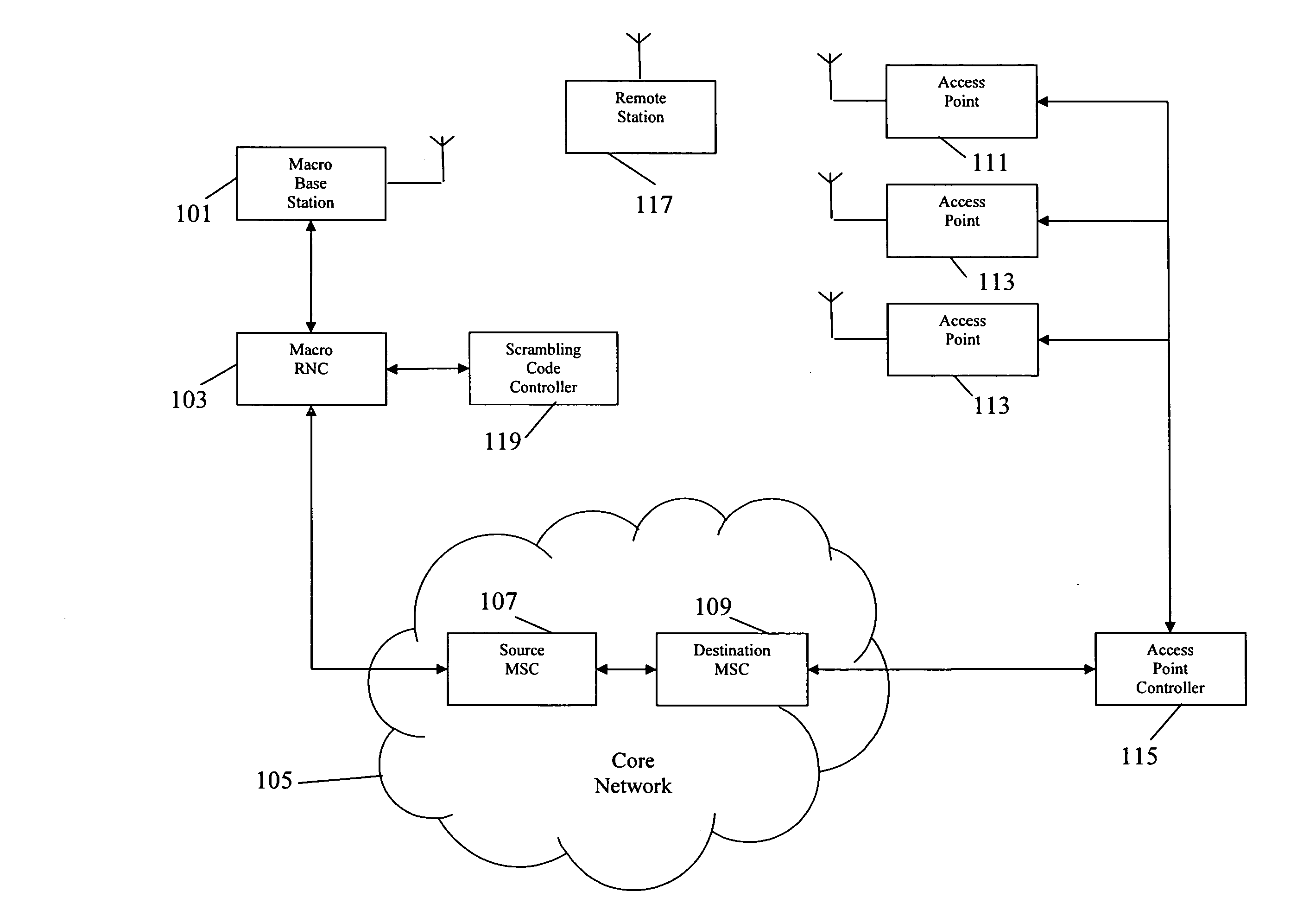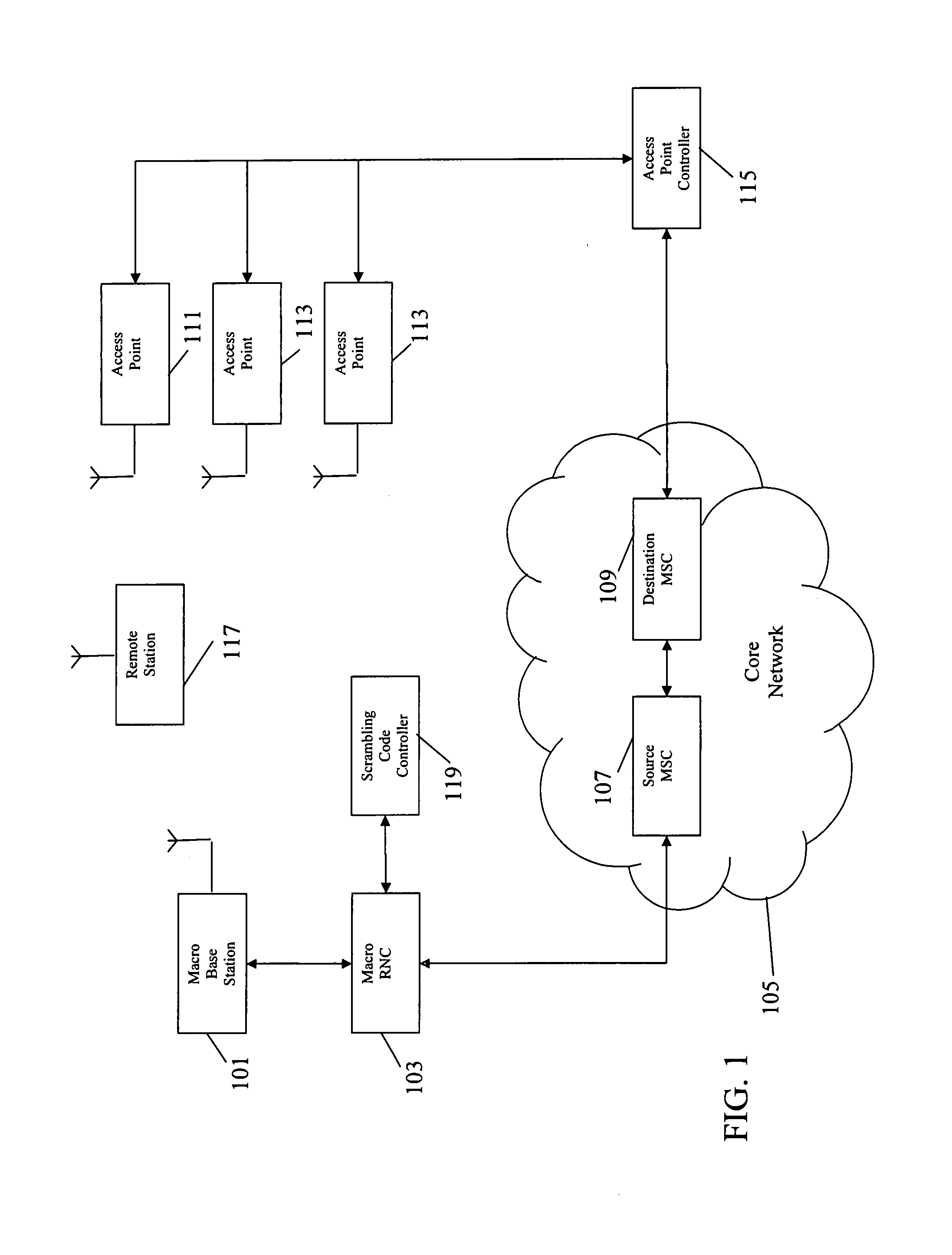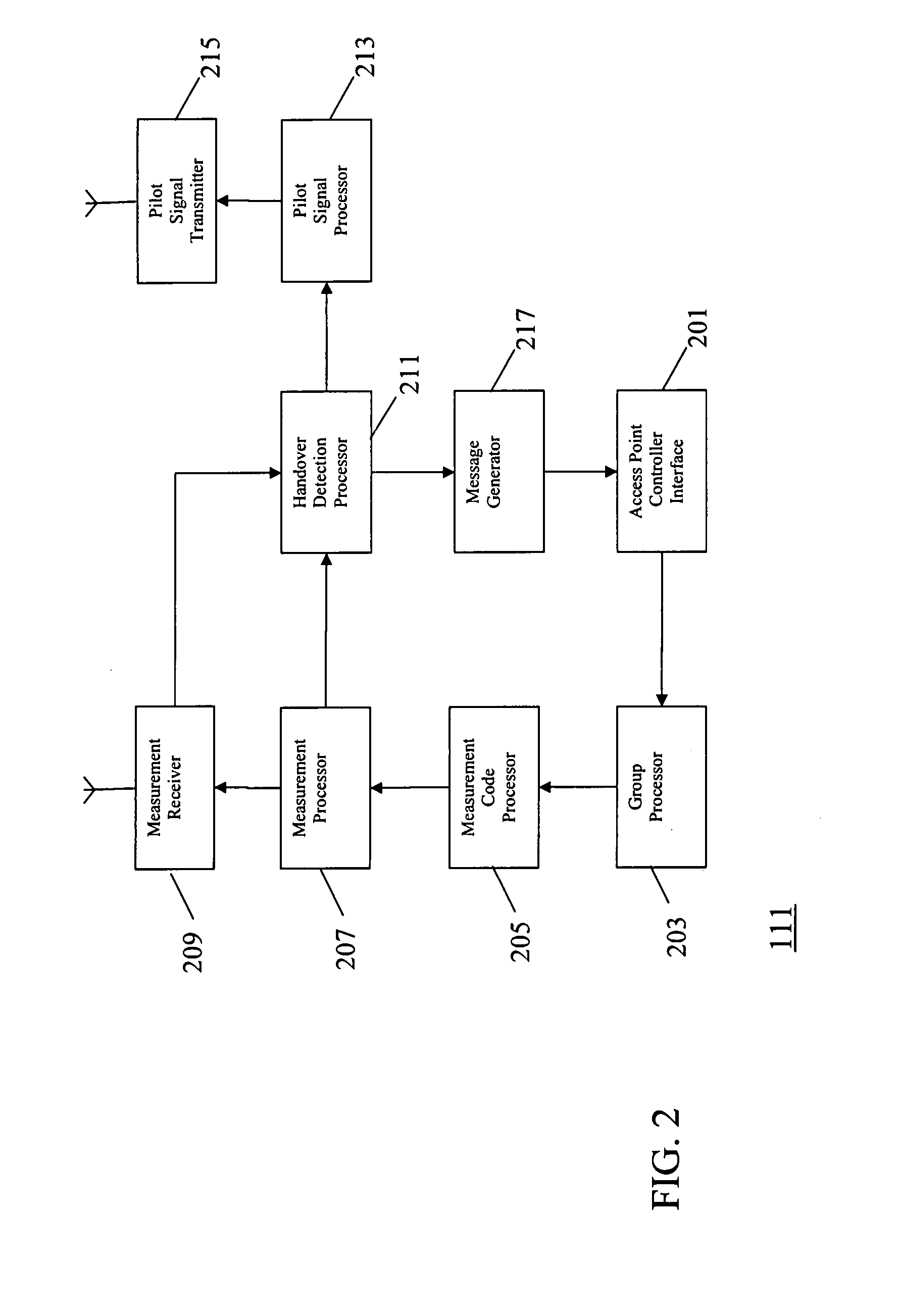Code division multiple access cellular communication system
ode technology, applied in the field of cdma cellular communication system, can solve the problems of large number of small underlay cells within a single macro-cell, extend the current approach to scenarios where neighbouring cells are not practical, and achieve the effect of facilitating the sharing of pilot signal scrambling codes, improving handover detection, and improving the operation of cellular communication systems
- Summary
- Abstract
- Description
- Claims
- Application Information
AI Technical Summary
Benefits of technology
Problems solved by technology
Method used
Image
Examples
Embodiment Construction
[0027]The following description focuses on embodiments of the invention applicable to a 3rd Generation CDMA (Code Division Multiple Access) cellular communication system such as a Universal Mobile Telecommunications System (UMTS). However, it will be appreciated that the invention is not limited to this application but may be applied to many other cellular communication systems. Also, the description will focus on scenarios where a remote station is handing over from a macro-cell to an underlay cell such as a micro-cell or a pico-cell. However, it will be appreciated that the described principles apply equally to other scenarios including e.g. some scenarios where a handover is made to a macro-cell out of a group of macro-cells using a shared pilot signal scrambling code.
[0028]FIG. 1 illustrates an example of a cellular communication system which in the specific example is a UMTS cellular communication system. In the system, a macro-layer is formed by macro-cells supported by base s...
PUM
 Login to View More
Login to View More Abstract
Description
Claims
Application Information
 Login to View More
Login to View More - R&D
- Intellectual Property
- Life Sciences
- Materials
- Tech Scout
- Unparalleled Data Quality
- Higher Quality Content
- 60% Fewer Hallucinations
Browse by: Latest US Patents, China's latest patents, Technical Efficacy Thesaurus, Application Domain, Technology Topic, Popular Technical Reports.
© 2025 PatSnap. All rights reserved.Legal|Privacy policy|Modern Slavery Act Transparency Statement|Sitemap|About US| Contact US: help@patsnap.com



